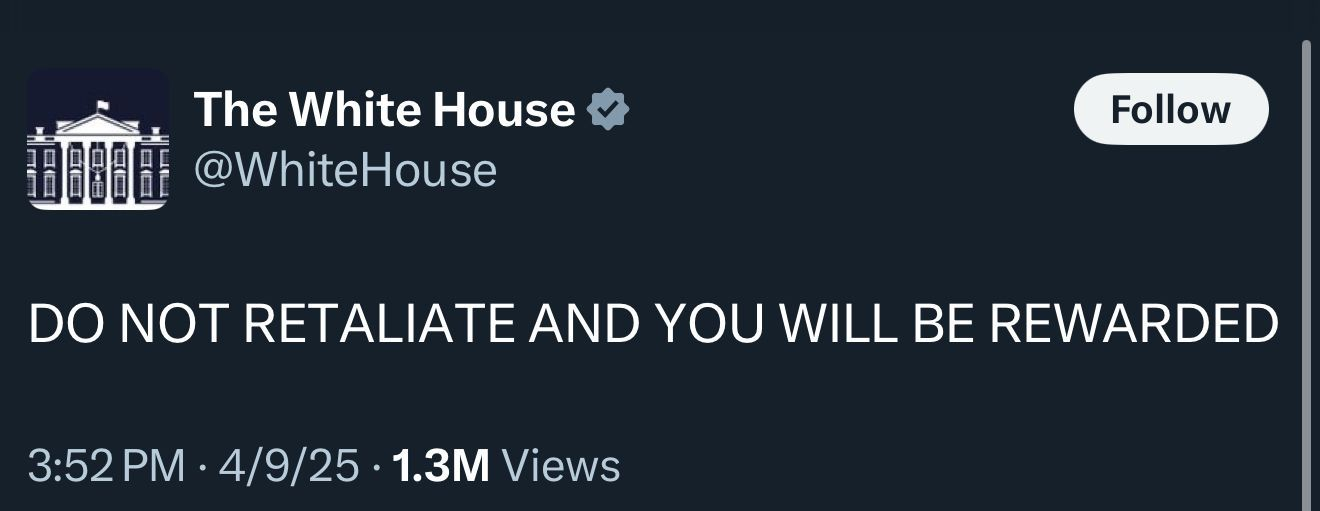
Countries reacted to Trump's tariffs in a variety of ways, with some (like Canada and China) imposing reciprocal tariffs while others (like Australia and New Zealand) deciding to not.
This market seeks to predict whether countries that "don't retaliate" by imposing reciprocal tariffs face, on average, lower tariffs on U.S. imports (compared to Liberation Day / trade balance baselines) than ones that do.
RESOLVES "YES" IF NOT RETALIATING LEADS TO LOWER TARIFFS
RESOLVES "NO" IF IT LEADS TO HIGHER TARIFFS
RESOLVES "N/A" IF DIFFERENCE IS NOT SIGNIFICANT
In essence, whether retaliation is effective or not in Trump's Liberation Day trade war.
The calculation will be done as such:
Countries will be classified according to "Yes reciprocal tariffs" and "No reciprocal tariffs", and the average change in % of tariffs (difference in December from Liberation Day) will be calculated for the two groups (as close to December 1st, 2025 as possible).
Caveats: this is agnostic to alliances, economy size, and retaliation size - in order to make the calculation simple. Canada and Mexico will be calculated according to their pre-Liberation Day Trump Tariff baseline, as those Trump tariffs were made beforehand. China will also be included.
I may decide to default to a comprehensive report from a trusted source if available. I will try to use latest estimates for tariff %s in so far as they are available. I may decide to change the way the calculations are done to better reflect the spirit of the question (if there is enough interest in the market), or in order to make it easier with the available data (if there isn't). I may decide to defer until enough data or a good report is available if I don't have the time.
I will not be betting on this market.
Update 2025-04-29 (PST) (AI summary of creator comment): - Threshold for resolution: The average tariff difference between non-retaliating and retaliating countries must exceed 1% to resolve YES.
Statistical tests (optional): If the market gains traction, the creator may perform significance calculations (e.g., p < .10 or p < .05) and report them, but the 1% rule applies by default.